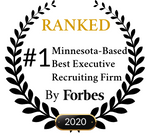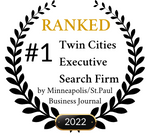In a recent ADP article, writer Ellen Gregory dispels a few long-held myths about “generational differences” in today’s workforce. Most notably, she points to U.S. Department of Labor statistics from 1983 – 2016 (the most recent available) to suggest that “job hopping” among younger workers is not a new phenomenon. Millennials didn’t start this trend. In fact, today’s baby boomers jumped around from job to job at roughly the same frequency when they were the age of today’s millennial workers.
What prompts an employee to leave – or to stay in – a job is more a function of their needs and goals at different stages in their lives. Notably, those life-cycle driven needs have actually changed very little over the past 35 years. If you haven’t read it yet, check it out. It will change the way you look at job hoppers. More importantly, it may shift your thinking as you tackle the ever-growing challenge of employee retention. The piece ends with an urgent recommendation for every employer: it’s time to invest in retention strategies that address age-specific needs of workers.
I agree. But I don’t want to overlook the fundamental importance of investing in retention strategies that work across all employee age groups.
I speak from personal experience. As most people know, executive recruiting firms are notoriously bad at retaining their own employees. Ironic, isn’t it? So when we formed SkyWater Search Partners five years ago, we set out to prove that we were different from the other top tier firms. We wanted to walk the talk of hiring – and retaining – the best people. I’m proud to say that’s exactly what we’re doing.
How? We started by asking our employees – both current and former – what would make them want to stay for the long haul. Then we used what we learned to create a broader path to success for all of our employees, and a more helpful roadmap for getting there. When we first started these conversations, 5 consistent threads ran through the feedback we received.

Here’s what we learned every employee wants, no matter how young or old they are:
- Clear Goals: exactly what do they need to do and deliver, by when? Because of the long sales cycle, many employees told us never really knew where they stood. They hated that. For high potential new hires, this was especially painful. Our people wanted better metrics, as close to real-time as possible. They wanted to know, on a day-to-day basis, whether they were on track to a big check or hopelessly off track and in the weeds. So we’ve broken down the sales cycle into measurable, predictive chunks. We follow the SMART model, laying out specific activities that are highly predictive of completed placements, revenue and compensation. Today, every one of our recruiters knows exactly where they stand, every day, and they have a clear roadmap they can follow to achieve their own goals.
- Results-Driven Processes: people want access to best practices. Telling them to just get out there and “call, call, call” to “sell, sell, sell” is not going to cut it. So we invested in a best practices study of our own, identifying the critical steps in our recruiting and relationship management process. Today, we have a clearly defined, highly detailed sales process. We train and coach everyone to it. But we also listen carefully to new ideas and emerging best practices and make sure we integrate those into our processes going forward.
- 360 Degree Coaching: highly motivated people crave honest feedback. They want to learn from managers, peers, and clients what’s working, what needs to work better, and how to make those improvements. We routinely pair new hires with experienced heavy hitters. But we also expect everyone here to help each other, share their own best practices, and pursue team success. Likewise, our firm’s leadership team needs to maintain a work environment that fosters that kind of coaching, mentoring, and support. That means we need to do a lot more than talk to our current team. It means we need to hire recruiters who bring the enthusiasm for the mission, aptitude for the job, and self-motivation necessary to sustain that kind of teamwork.
- Measurement: This is an industry where individual success is rewarded with a handsome paycheck. And there’s an old school belief that, if you dangle a big enough commission, the best recruiters will do whatever it takes to earn it, the rest will leave, and that’s a successful business model. It’s not. It’s a burn and churn model that, while possibly financially sustainable for some firms, is brutalizing and unsatisfying to far too many people. We just didn’t want to operate that way. We still measure – and reward -- performance based on completed placements. But we also measure the effectiveness of each recruiter’s activities. How frequently are they communicating with clients, active candidates, passive candidates and referral sources? How productively are they communicating? How positively are they representing this firm? What kinds of responses are they getting? These are just a few of the things we track. And we use those metrics as the basis for robust coaching conversations.
- Freedom: I thought about calling this one “Rewards.” But that would be misleading because I’m not just talking about the potential to earn a very substantial paycheck. Top recruiters who learn how to consistently place top talent with top clients are paid well. With that kind of compensation comes some pretty significant financial But we learned that the best recruiters don’t simply measure their success – or job happiness – by the digits on their checks. They want greater independence. They want autonomy. And they want the freedom to set their own hours, take as much vacation time as they need, and make their own adjustments as changes in their lives might demand.
Yes, we provide flexible schedules and unlimited vacation. Maybe that’s not what your employees need or want most. But it’s what our folks want. Our performance management model allows us to do it. And that works for us. That’s it. 5 easy steps. And every single one of them came out of earnest, honest conversations with our team members. It taught us this important lesson:
Multigenerational Retention is the result of Ongoing Multigenerational Communication.
Today, I’m incredibly proud of our retention numbers. We’ve gotten there by putting good process, solid measurement, and self-management tools into the hands of each employee. Today, no one feels like they’re running on a hamster wheel, unsure of where they’re headed. No one is surprised by their sales numbers. And everyone is a self-manager with access to great tools, great process and highly competent coaching. But I’m also aware that the only way we’ll keep it up is to keep listening to needs of all employees, keep sharing great new ideas as enthusiastically as we share current best practices, and keep striving to meet every individual new hire where they are.








